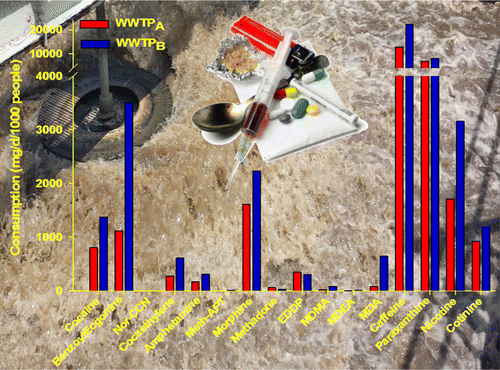Gauging local illicit drug use in real time could help police fight abuse

The war on drugs could get a boost with a new method that analyzes sewage to track levels of illicit drug use in local communities in real time. The new study, a first-of-its-kind in the U.S., was published in the ACS journal Environmental Science & Technology and could help law enforcement identify new drug hot spots and monitor whether anti-drug measures are working.
Kurunthachalam Kannan and Bikram Subedi note that to date, most methods to estimate drug use in the U.S. are based on surveys, crime statistics and drug seizures by law enforcement. But much illegal drug use happens off the radar. To better approximate usage, scientists have been turning to wastewater. Like a lot of other compounds from pharmaceuticals and personal care products to pesticides, illegal drugs and their metabolic byproducts also persist in sewage. In Europe, a number of studies have been done to see how well wastewater treatment plants are removing illicit drugs from sludge before treated water is released into the environment. But until now, no study in the U.S. had looked at this, likely leading to underestimates of abuse. Kannan and Subedi wanted to form a more complete picture of drug use, so they studied levels of illicit drugs at two wastewater treatment plants in Albany, New York.
Surprisingly, the scientists found cocaine in 93 percent of all untreated samples. Levels of byproducts from opioids and hallucinogenic drugs were also detected. They found that the wastewater treatment plants didn't remove all illicit drugs before releasing water back into the environment – and eventually into drinking water. But, the researchers suggest, tracking drugs in wastewater could help policymakers and law enforcement understand patterns of abuse and better fight it.
More information: Mass Loading and Removal of Select Illicit Drugs in Two Wastewater Treatment Plants in New York State and Estimation of Illicit Drug Usage in Communities through Wastewater Analysis, Environ. Sci. Technol., Article ASAP. DOI: 10.1021/es501709a
Abstract
Sewage epidemiology is a rapidly expanding field that can provide information on illicit drug usage in communities, based on the measured concentrations in samples from wastewater treatment plants (WWTPs). In this study, select illicit drugs (six drugs and eight metabolites) were determined on a daily basis for a week in wastewater, suspended particulate matter (SPM), and sludge from two WWTPs in the Albany area in New York State. The WWTP that served a larger population (100 000, with a flow rate of 83 300 m3/d) showed 3.2 (methadone) to 51 (3,4-methylenedioxyamphetamine; MDA) times higher mass flows of illicit drugs than did the WWTP that served a smaller population (15 000, with a flow rate of 6850 m3/d). The consumption rate of target illicit drugs in the communities served by the two WWTPs was estimated to range from 1.67 to 3510 mg/d/1000 people. Between the dissolved and particulate phases, the fraction of methadone, 2-ethylidene-1,5-dimethyl-3,3-diphenylpyrrolidine (EDDP), amphetamine, and MDA sorbed to SPM ranged from 34.3% to 41.1% of the total mass in the waste stream. The removal efficiencies of illicit drugs from the two WWTPs ranged from 4% (norcocaine) to 99% (cocaine); however, methamphetamine, methadone, and EDDP showed a negative removal in WWTPs. The environmental emission of illicit drugs from WWTP discharges was calculated to range from 0.38 (MDEA) to 67.5 (EDDP) mg/d/1000 people. Other markers such as caffeine, paraxanthine, nicotine, and cotinine were found to predict the concentrations of select illicit drugs in raw wastewater (r2 = 0.20–0.79; p ≤ 0.029).
Journal information: Environmental Science & Technology
Provided by American Chemical Society

















